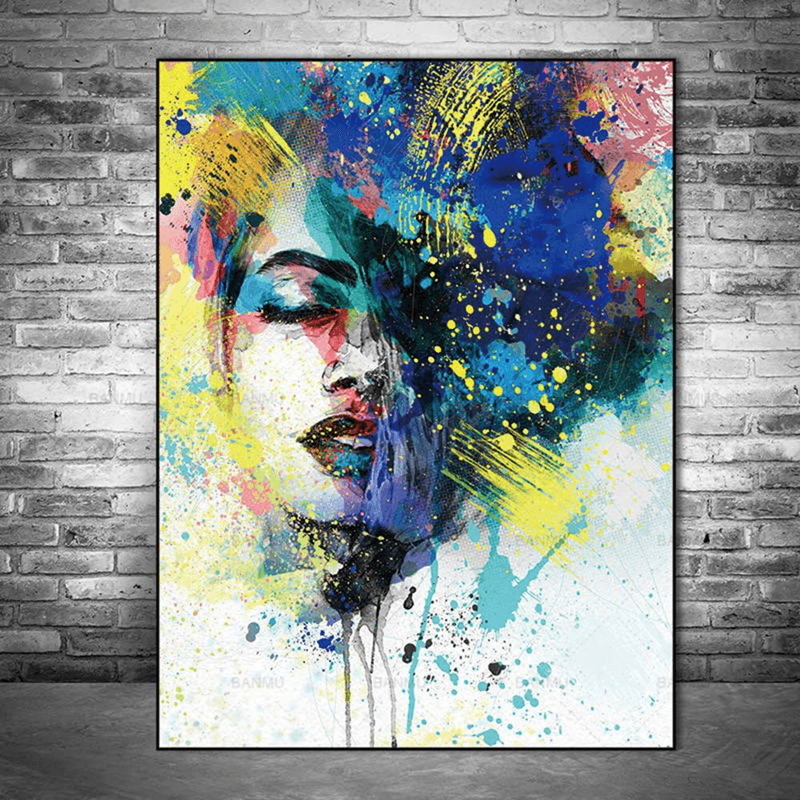Oil painting is one of the most revered and enduring art forms in history. For centuries, artists have used this medium to capture the beauty of the world, express emotions, and tell stories that transcend time. Whether you’re a seasoned artist or a curious beginner, oil painting offers a unique and rewarding creative experience. In this blog post, we’ll explore the magic of oil painting, its history, techniques, and why it continues to captivate artists and art lovers alike.
A Brief History of Oil Painting
Oil painting dates back to at least the 7th century, but it gained prominence during the Renaissance in the 15th century. Artists like Leonardo da Vinci, Rembrandt, and Johannes Vermeer mastered the medium, creating masterpieces that still inspire awe today. The invention of oil paints allowed for greater flexibility, depth, and realism in art, revolutionizing the way artists approached their work.
Unlike other mediums, oil paints dry slowly, giving artists the freedom to blend, layer, and refine their creations over time. This characteristic has made oil painting a favorite among artists who seek to achieve intricate details and rich textures.
Why Choose Oil Painting?
- Versatility and Depth
Oil paints are known for their vibrant colors and ability to create stunning depth. The slow drying time allows for seamless blending, making it easier to achieve gradients and subtle transitions. - Durability
Oil paintings are incredibly durable and can last for centuries when properly cared for. Many of the world’s most famous artworks are oil paintings that have stood the test of time. - Expressive Potential
The texture and richness of oil paints allow artists to convey emotion and atmosphere in ways that other mediums often cannot. From hyper-realistic portraits to abstract landscapes, the possibilities are endless.
Essential Tools for Oil Painting
If you’re new to oil painting, here’s a list of basic supplies to get started:
- Oil Paints: Start with a few high-quality colors like titanium white, ultramarine blue, cadmium yellow, and alizarin crimson.
- Brushes: Invest in a variety of brushes, including flat, round, and filbert shapes, to experiment with different strokes.
- Canvas or Panels: Stretched canvas or wooden panels are ideal surfaces for oil painting.
- Palette: Use a wooden or glass palette to mix your colors.
- Mediums: Linseed oil or turpentine can be used to thin paints and adjust drying times.
- Easel: A sturdy easel will help you work comfortably and maintain good posture.
Basic Oil Painting Techniques
- Underpainting
Start with a monochromatic base layer to establish the composition and values of your painting. This technique, often done in shades of gray or brown, serves as a foundation for your work. - Layering
Oil painting is all about building layers. Start with thin, transparent layers and gradually add thicker, opaque ones. This method creates depth and richness in your artwork. - Blending
Use soft brushes or your fingers to blend colors seamlessly. This technique is perfect for creating smooth transitions and realistic skin tones. - Impasto
Apply thick layers of paint with a palette knife or brush to create texture and dimension. This technique is often used to add dramatic effects to landscapes or abstract pieces. - Glazing
Apply a thin, transparent layer of paint over a dried layer to alter the color or tone. Glazing can add luminosity and depth to your painting.
Tips for Beginners
- Start Small: Begin with smaller canvases to practice your skills without feeling overwhelmed.
- Experiment: Don’t be afraid to try different techniques and styles. Oil painting is a journey of discovery.
- Be Patient: Oil paints take time to dry, so embrace the process and allow yourself to work at a slower pace.
- Learn from the Masters: Study the works of famous oil painters to understand their techniques and gain inspiration.
The Joy of Oil Painting
Oil painting is more than just an art form—it’s a meditative and fulfilling practice that allows you to connect with your creativity on a deeper level. Whether you’re painting a serene landscape, a vibrant still life, or an abstract masterpiece, the process of working with oils is both challenging and deeply satisfying.
In a world dominated by digital art and fast-paced technology, oil painting reminds us of the beauty of slowing down and creating something tangible with our hands. It’s a timeless art form that continues to inspire and captivate artists of all levels.
Final Thoughts
Oil painting is a journey of exploration, patience, and self-expression. Whether you’re drawn to its rich history, its versatility, or the sheer joy of creating, there’s no denying the allure of this classic medium. So, pick up a brush, dip it into a vibrant hue, and let your creativity flow onto the canvas. The world of oil painting is waiting for you to make your mark.

